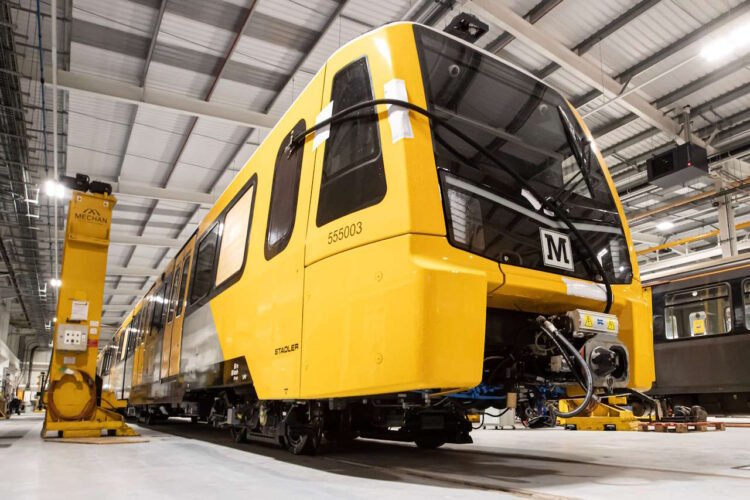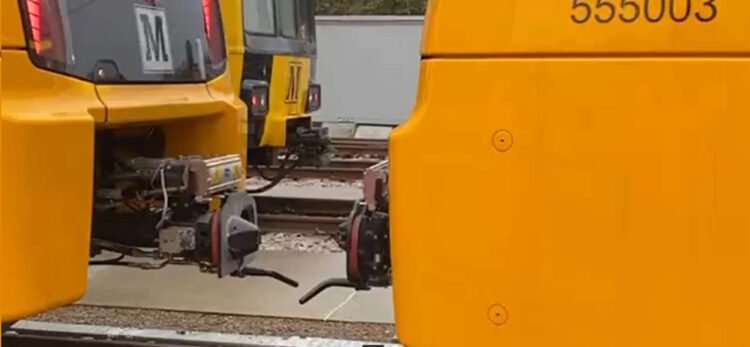Nexus has successfully carried out traction power tests with its new Stadler Class 555 trains over the Tyne and Wear Metro‘s network’s curves and gradients to prove that they are fully capable of service, and testing them to evaluate their horsepower.
This latest round of testing was carried out on the curved sections of the line at Manors and Tynemouth, and on a gradient in the underground section between Haymarket and Jesmond. The trials consisted of testing the new train’s ability to tow one of the old trains, which is vital as during the transition period both old and new trains will be in service at the same time.

Although the new trains have battery technology to allow them to move around the network under their own power, the traction testing was necessary to prove that if the need arose, a fully laden new train is capable of pulling a second unit.
Before the new trains are introduced into operational service, they will have undergone around 90,000 individual tests, including everything from seats and windscreen wipers, to brakes, CCTV, doors, wheels, and power supply.

Nexus reports that the latest tests were completed satisfactorily, with further tests to be made on power consumption, ride quality, and performance reliability. The complete fleet of 46 new trains need to pass 37,000 kilometres of fault-free running, and comply with around 22,000 standards and clauses. In addition, 480 staff need to be trained, which will require around 19,000 hours of training time.
Head of Fleet and Depot Replacement for Nexus, Michael Richardson, said: “Our rigorous testing programme continues to go well, and one of the most recent runs saw a focus on the new train’s traction power.
“We had to check that the new train was capable of hauling one of the old ones, especially in areas of the Metro network where there are curves and gradients. This is essential given that the fleet transition period will see both new and old trains in service on the network at the same time.
“The test train was loaded with 39 tonnes of sand packages to simulate a full customer loading and then put through its paces towing one of the old two carriage sets, which, I am pleased to say, it managed comfortably and performed as expected.
“The team also tested that at fully laden new train is capable of hauling another one of the new trains. The power output is really impressive. It weighs 98 tonnes and then laden with 39 tonnes of extra weight it was still able to pull an old Metro car set, which with two carriages coupled together weighs 80 tonnes.
“Testing the new Metro fleet is a really detailed process. We are going through around 90,000 different checks and are leaving no stone unturned as we get the first train ready to welcome customers next year.
“The Stadler trains are going to be transformative, and we are really excited to get them into service. They have been shaped by customers, employees, trade unions and specialist user groups. We believe this to have been the most far-reaching consultation yet staged into a new train design. Over 23,000 customer responses have helped to shape the design.”






Responses